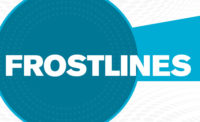For many years, the use of flammable refrigerants — such as the A3 hydrocarbon R-290 (or propane) — has been a keen area of collective focus among the regulatory bodies governing refrigerant safety standards in commercial refrigeration. Offering excellent energy efficiencies and very low- GWP, this natural refrigerant has long been approved for use in applications with a maximum charge limit of 150 grams. Recently, the Underwriters Laboratory (UL) has approved the second edition of its UL 60335-2-89 standard, which includes higher R-290 charge limits that would expand its potential uses in commercial refrigeration.
To date, R-290’s 150-gram charge limit has hindered its wider adoption, narrowing its use to self-contained refrigeration cases or requiring the use of multiple condensing units to achieve higher capacities. The updated UL standard raises the charge limits on these commercial stand-alone displays based on whether they have an open or closed design:
- 500-gram maximum charge limit in open appliances (without doors).
- 300-gram maximum charge limit in closed appliances (with doors or drawers).
The 500-gram charge in open appliances raises the limit to 13 times the lower flammability limit (LFL) of R-290, while the 300-gram charge limit in closed appliances is eight times that of R-290’s LFL.
From an application design perspective, these higher charge limits will help OEMs to increase system capacities while capitalizing on R-290’s high efficiency and low-GWP rating (GWP=3). For contractors, consultants, and end users seeking to meet sustainability objectives or comply with refrigerant regulations, self-contained R-290 cases have become integral to their overall refrigeration strategies.
The approved update to the UL 60335-2-89 standard is a key first step in the path toward wider R-290 adoption in commercial refrigeration. Although OEMs should begin planning their design cycles to enable these charge increases, other regulatory approvals will need to take place before higher-charge R-290 systems can be implemented throughout the U.S. and Canada. Pending approvals by other governing bodies include:
- Environmental Protection Agency’s (EPA) Significant New Alternatives Policy (SNAP) program;
- American Society of Heating, Refrigeration and Air-Conditioning Engineers (ASHRAE) 15 safety standard for refrigeration systems;
- Model Code updates in the upcoming code revision cycle; and
- State and local building code updates.
For many U.S. industry insiders, the R-290 charge limit increase represents a logical next step in the progression of this natural refrigerant. Even prior to the UL approval, some sustainably minded operators have worked with their local building code administrators to implement systems with higher charges of R-290. In addition, a 500-gram R-290 charge limit has been in place in Europe since 2019, when the International Electrotechnical Commission (IEC) approved the increase under its IEC 60335-2-89 standard for self-contained commercial display cases.
After years of speculation, the commercial refrigeration industry in the U.S. can begin planning for the use of systems with larger charges of R-290 — enabling higher-capacity refrigeration while benefiting from R-290’s proven efficiencies and lower-GWP rating. Emerson is prepared to support this transition by developing R-290 qualified compressors that will help OEMs and stakeholders to achieve regulatory compliance, fulfill their sustainability objectives, and reduce energy consumption.
Katrina Krites is the director of strategic marketing, cold chain at Emerson Commercial and Residential Solutions Business.







